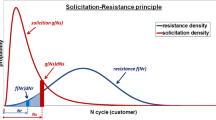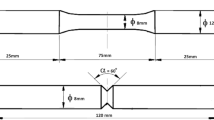Abstract
For the reliability of automotive components, it has to satisfy the dimension accuracy and the strength design requirements for part that has the consistent strength distribution. Since it has the defect due to actual manufacturing process and inhomogeneity of material, the strength design requirement should be not satisfied. In this way, verification of analysis and prediction of fatigue life was very difficult from difference of the failure region. The cold forging products generally has heterogeneity of strength, hardening and fatigue resistance. Therefore, it’s important to understand the characteristics of material strength and fatigue of cold forging products considering heterogeneous effect in order to do durability analysis. In this study, in order to propose the method of durability analysis with inhomogeneity of the material, the heterogeneous characteristics are confirmed by predicting the effective strain to perform the plastic deformation simulation influenced from the strength condition and microstructure of pulley at power transmission. Analysis and prediction of effective strain from cold forging is performed by software DEFROM for inhomogeneous characteristics. And the stress of the real operation in performed by MSC.NASTRAN. Also, through correlation about effective strain and hardness, the failure position and the life were estimated to predict the fatigue strength and the external applied stress.
Similar content being viewed by others
References
A. K. Gosh and R. Raj, A model for the evaluation of grain size distribution during super plastic deformation, Acta. Met. Mater., 34(3) (1986) 447–456.
S. Torquato and N. Sheehan, Generating microstructures with specified correlation function, J. Appl. Phys., 89(1) (2001) 53–60.
Y. Saito, The Monte Carlo simulation of microstructural evaluation in metal, Mater. Sci. Eng. A, 233 (1997) 114–124.
K. Muszka, P. D. Hodgson and J. Majta, Study of the effect of grain size on the dynamic mechanical properties of microalloyed steels, Mater. Sci. Eng. A, 500 (2009) 25–33.
D. K. Kim, S. Y. Kang, S. H. Lee and K. J. Lee, Analysis and prevention of cracking phenomenon occurring during cold forging of two AISI 1010 steel pulleys, Metall. & Mat. Trans. A, 301A (1999) 81–92.
D. Umbrello, S. Rizzuti, J. C. Outeiro, R. Shivpuri, R. M’saoubi, Hardness — based flow stress for numerical simulation of hard machining AISI H13 tool steel, J. Mater. Process. Tech., 199 (2008) 64–73.
MSC. Software, MSC. Nastran users guide, USA, 2005.
H. J. Shim and J. K. Kim, Considering of fatigue life optimization of pulley in power steering system, Mater. Sci. Eng. A, 483–484 (2008) 452–455.
H. J. Shim and J. K. Kim, Cause of failure and optimization of a V-belt pulley considering fatigue life uncertainty in automotive application, Eng. Fail. Anal., 16 (2009) 1955–1963.
Deform 2D V. 9.0.1-User Manual, DeformTM, Scientific forming technologies corporation ed., Columbus, OH, USA (2006).
D. J Kim and B. M. Kim, Application of neural network and FEM for metal forming processes, Int. J. Mach. Tool. Manu., 40 (2000) 991–925.
H. K. Kim, S. M. Lee and T. Altan, Prediction of hardness distribution in cold backward extruded cups, J. Mater. Process. Tech., 59 (1996) 113–121.
H. Tumer and F. O. Sonmez, Optimum shape design of die and perform for improved hardness distribution in cold forged parts, J. Mater. Process. Tech., 209(3) (2009) 1538–1549.
Y. Choi, J. H. Park, B. M. Kim, J. C. Choi and B. H. Min, Estimation of relationship between effective strain and hardness by rigid-plastic FEM, Met. Mater, 6(2) (2000) 111–116.
K. H. Kloos, E. Velten, Berechnung der dauerschwingfestigkeit von plasmanitrierten bauteilahnlichen proben untter berucksichtigung des härte-und eigenspannungs verlaufs, Konstrucktion, 36(5) (1984) 181–188.
J. H. Song and S. L. Kwang, Estimation method for strain-life fatigue properties from hardness, Int. J. Fatigue, 28 (2006) 386–400.
M. L. Roessle and A. Fatemi, Strain-controlled fatigue properties of steels and some simple approximations, Int. J. Fatigue, 22 (2000) 495–511.
J. E. Shigley, C. R. Mischke and R. G. Budynas, Mechanical Engineering Design, 7th Ed. MacGraw-Hill (2005).
M. R. Mitchell, Fundamental of Modern Fatigue Analysis for Design, ASM Handbook Fatigue & Fracture, 19 (1996) 227–249.
ASTM, Test Method for Microhardness of Materials, E348 (1989).
Author information
Authors and Affiliations
Corresponding author
Additional information
This paper was recommended for publication in revised form by Associate Editor Chongdu Cho
Hee-Jin Shim received the masters’ degree and Ph.D. degree from the Department of Mechanical Engineering, University of Hanyang, Korea, in 2005 and 2010, respectively. She is currently a senior researcher at KEPCO E&C. Dr. Shim’s research interests are in the areas of fatigue, integrity evaluation, welded joints and advanced materials. She studies these subjects through experimental and numerical means.
Jung-Kyu Kim received his Ph.D. degree from the University of Keio, Japan, In 1982. He is currently a full-professor in the Department of Mechanical Engineering in Hanyang University, Seoul South Korea. His principal research interests include the fatigue behavior of materials and components, the development of experimental methods to evaluate and monitoring fatigue damage.
Rights and permissions
About this article
Cite this article
Shim, HJ., Kim, JK. Durability analysis of an automotive component in consideration of inhomogeneous hardness. J Mech Sci Technol 25, 621–629 (2011). https://doi.org/10.1007/s12206-011-0126-4
Received:
Revised:
Accepted:
Published:
Issue Date:
DOI: https://doi.org/10.1007/s12206-011-0126-4




